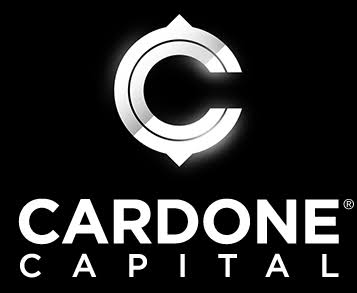Company owners should always be looking for ways to boost their profits, and some resort to ATMs (automated teller machines) to increase their passive revenue. Brick-and-mortar companies like restaurants, gas stations, and nail salons may profit from having an ATM. It can increase client traffic and generate revenue for your company. But how profitable is an ATM? Here we’ll see how to start an ATM business, the cost, and how to know when the business dying.
How to Make Money with an ATM
When individuals use an ATM, they normally pay a fee of $2 to $3, which is how businesses get the majority of their money from these devices. “When a business allows an ATM to be installed at their site, they have the chance to earn a commission,” said Paul Carriere, an attorney with Favret Carriere Cronvich. “The simplest way to think about earning a commission is that when someone uses an ATM, there is a ‘surcharge,’ which is a cost for utilizing the ATM.”
Unfortunately, business owners often do not receive the entire charge. If you rent the ATM, the company that maintains it (fills it with cash, repairs it, etc.) receives a portion of the money.
“There are several permutations on the split, but the firm profits from surcharge transactions,” Carriere explained. While businesses can profit from the fees, some business owners look for other ways to profit from ATMs. Advertisements on ATMs are one of the most prevalent approaches.
Mistakes to Avoid when Starting an ATM Business
For a comprehensive overview of the ATM business and step-by-step instructions on how to get started, see the 8 blunders listed below. The decision to start your own ATM business was made by you. Here are several blunders to avoid:
#1. Exaggerate cash flow
Numerous web sources claim you may earn $500 or more per month from each ATM. Most of the time, these projections are far too optimistic. My advice is to do your research and budget for $250-$300 in additional income. A safe bet is $150-$200 on the low side. Make some calls, chat with merchants, and be conservative with your ATM business income predictions.
#2. Buying used equipment
Purchasing old ATM equipment may sound enticing, but you must be cautious of what you purchase right now. You should invest in new equipment when beginning an ATM business because EMV requirements are now in effect. When you buy new equipment, you get a 2-year warranty on the parts and you set your firm up for success. If you buy used equipment, you may have to do several repairs and may lose sites due to out-of-service machinery.
#3. Underestimating capital needs
To load the machines on a rotating basis, you will require cash. You should budget at least $2000 each week for each terminal. If you intend to deploy ten terminals, you will require at least $20,000 in working capital to maintain the devices.
#4. Ignore EMV
Conduct some EMV research to ensure you know what makes/models can be upgraded and what the prices are. This will save you time and trouble when EMV is adopted. As of 2018, the majority of new machines sold were EMV-enabled.
#5. Failure to establish a bank relationship first
With Operation Chokepoint and other difficulties at hand, you should contact your bank or a locally approved bank to ensure that they can support your ATM business’s demands.
#6. Make your margins too small
When negotiating your surcharge fees and commissions with your merchants, use caution. Don’t give away too much of your profit margin. You must be familiar with the market and understand what is expected, but you should not give too much away.
#7. Not having signed contracts
If you intend to sell or defend your ATM locations, you should make every effort to obtain signed agreements from all of your merchants. Many operators run their ATM business without contracts, and when it’s time to sell, the value is diminished. You will also have nothing to stand on if the retailers decide to remove your ATM or allow a competitor to enter. The bottom line is to sign contracts.
#8. Terrible geography
Make sure your locations aren’t too far off from your main base or each other. Pick an area wisely and make every effort to keep up with it. The greater the distance between your locations, the greater the time and service cost. A densely linked network of machines is also significantly more tempting to buyers.
How to Start an ATM Business
A fantastic method to make money and give a valued service to clients is to start an ATM business. Yet, to assure success, it is critical to grasp the process and the processes involved. These are 14 steps to start an ATM business:
Step 1: Do Market Research
Researching the market and comprehending the competition is crucial before you start your ATM business. Investigate what other companies have to offer in terms of services, rates, and locations. This can assist you in determining whether there is a need for your services in the area and whether you can offer something unique that will set you apart from other firms.
Step 2: Choose Your Location
The success of your ATM business depends on choosing the right location. While choosing a location, consider variables such as foot traffic, visibility, security, and accessibility. You should also take into account any municipal rules or zoning laws that may apply to your firm.
Step 3: Get Licenses and Permits
You must receive all relevant licenses and permits from local authorities before you can start your ATM business. This could include a company license, a sales tax permit, or any other licenses necessary by local legislation.
Step 4: Obtaining Equipment
ATMs are pricey pieces of equipment that require routine maintenance and upkeep. Before acquiring any equipment, do your research and compare pricing from several providers to get the best bargain available.
Step 5: Locate Vendors and Suppliers
You will need to discover dependable suppliers and merchants who can supply you with cash for your ATMs as well as other goods like paper rolls and receipt tape. Before making any decisions, make sure you do your homework and compare rates from several providers.
Step 6: Establish Your Business Structure
Before starting your ATM business, you should establish a legal structure such as an LLC or corporation to shield yourself from personal liability in the event of any legal concerns or disagreements with clients or vendors. Speak with an attorney or accountant who specializes in business formation to help you navigate this procedure.
Step 7: Develop a Business Plan
When launching an ATM business, a well-written business strategy is crucial. Your plan should include details about your target market, pricing structure, marketing strategy, financial projections, and more. This document will serve as a road map for your company’s operations and should be updated regularly.
Step 8: Secure Financing
Obtaining finance is one of the most critical aspects of starting an ATM business since it determines how much money you have available for startup fees like equipment purchases or marketing expenses. Consider seeking loans from banks or investors if sufficient funding is required to successfully establish your business.
Step 9: Promote Your Business
It’s time to start marketing your new ATM business after everything is in place and operational. Creating a complete marketing strategy that incorporates both online and offline approaches can assist ensure that potential clients are aware of your services and where to find them when they need them most!
Step 10: Staff Training and Equipment Installation
Once all of the appropriate documentation has been completed and finance has been acquired, it is time to start training personnel on how to correctly use the equipment so that they can give exceptional customer service while assisting consumers in using their ATMs! When you open your doors, ensure sure all of your equipment is properly placed according to the manufacturer’s recommendations!
Step 11: Open for Business!
After all of these stages have been properly done, it is finally time to open your doors! Make sure everything is in order before the first day of operation so that clients have a great experience while using your ATMs!
Step 12: Monitor Performance and Make Adjustments as Necessary
Once everything is in place, it is critical to monitor performance frequently to ensure that everything is working smoothly at all times! Furthermore, ensure that adjustments are made as needed depending on client feedback or changes in market conditions to stay ahead of the competition!
Step 13: Increase Services and Locations As Required
Consider increasing services supplied by adding new features such as check cashing or bill payment alternatives at specific locations as demand grows to maximize revenue possibilities even further! Consider expanding into new areas if there looks to be sufficient demand in those areas as well!
Step 14: Keep Current With Industry Rules & Trends
Finally, make sure to stay up to date on ATM-specific rules as well as industry developments to ensure that you remain competitive at all times!
ATM Business Profit
It’s very simple to make an ATM business profit. Yet, the amount you can make will depend on your goals, investments, and resources. The good news is that you influence the majority of these variables.
If you’re strategic, patient, and willing to experiment, you can find the exact formula for running an ATM business that generates the money you want. Before we get into the specifics, we’ll answer a few quick questions:
- Is it simple to turn a profit with an ATM business? Yes.
- Will it involve a lot of effort? Yes.
- Is there room for advancement? Yes.
When we claim it’s simple to earn a profit from an ATM business, we imply that as long as customers use the machine, you’ll make money. Isn’t it straightforward? But, getting others to utilize your machine will involve some work on your part.
How Many Transactions Do You Need to Make ATM Business Profit?
Sorry, we do not have a magic number for you. Each independent ATM deployer (IAD) will have various goals and start-up costs. You cannot make a profit until you have achieved your return on investment (ROI). And the timetable you establish for yourself to achieve that goal will dictate how many transactions you require and at what surcharge.
We do, however, have some average figures based on our own experiences and the experiences of the IADs with whom we collaborate. Consider the following situation to get an idea of what to expect:
Let’s say you put your surcharge at $2.50. It means you get $2.50 for every cash withdrawal transaction you make at your ATM. For this scenario, we’ll assume you get 6 transactions every day on average.
That works up to 180 transactions every month. Your ATM will generate roughly $450 in gross income each month if you multiply 180 by $2.50. Now consider how that relates to your objectives.
Is the ATM Business Dying?
No, the ATM business is not a dying industry.
Some might claim that the world is becoming more digital. As a result, ATMs have no future. And that will probably be true in 50 years.
But, ATMs will always be needed as long as cash is still in circulation. Currency has been around for thousands of years and will not go away any time soon. This is because it is the most widely accepted method of payment.
Cost to Start ATM Business
A new indoor ATM will cost you around $2,500. Outdoor machines cost around $10,000. The machine’s monthly rent might cost up to $100. A phone line for connecting to other banks costs $30 per month. Updating receipt paper costs $50 per month, and armored cash delivery might cost up to $500 per month.
Also, if the machine is outside, there may be a cost for maintenance. Yet, there is no specific figure for the cost of opening an ATM firm. I’d like to think that everybody who wants to start a business does so with a budget in mind.
Alternatively, you might wish to find out how much it will cost to create a business plan for the finances or change your budget. The cost to start an ATM business depends on a variety of factors such as ATM cost, location, business structure, licenses and permits, and insurance
Is the ATM Business Profitable?
Yes. Matter of fact, owning an ATM is a profitable business.
How Much Does it Cost to Start an ATM Business?
Depending on whether you buy a used or new machine, ATMs can cost anywhere from $1,000 to $10,000. Although buying secondhand machines is less expensive, they are frequently slower and appear older, so people are less likely to use them.
How Do I Start an ATM Business?
Step-by-Step Instructions for Starting Your Own ATM Business
- Get the capital.
- Locate the place.
- Talk to the location owner about a commission.
- ATM connection type at the workplace.
- Paperwork.
- ATM transaction.
- Delivery and setup of your new ATM.
- Putting money in the machine.
How Does an ATM Owner Make Money?
You earn money as an ATM owner every time someone withdraws cash from your machine. A convenience fee or charge is placed on the machine, and you collect it and get paid daily.
How Much do ATM Owners Make a Month?
This means that if your ATM processes three to four transactions per day, you might make between $180 and $360 or more per month. If your ATM is used 6 – 7 times per day and you charge $2.50, you will earn between $15 – $17.5 per day; if you charge $3.00, you will earn more than $20 per day or between $360 – $600 per month.
How Much Do ATM Owners Make Per Machine?
between $180 and $360 or more per month.
Conclusion
If your clients are more inclined to pay with cash than a card on-site, an ATM can be beneficial to your business. This is especially true if you anticipate making enough cash withdrawals each month to profit from your ATM. A little careful arithmetic and thorough thought about how frequently clients will use your ATM can help you make the proper decision. If you are successful, you can use the extra money to support a variety of business endeavors.
Related Articles
- HOW TO START AN ATM BUSINESS IN 2023: The Ultimate Guide
- ATM MACHINES: Cost, What to Know, When To & After Buying One
- How Much Can You Take Out of An ATM? ATM Withdrawal Limits
- CRYPTO ATMS: Are They Legit & How do they Work? (Detailed Guide)
- How to Start an ATM Business: Is it Profitable or Not?






